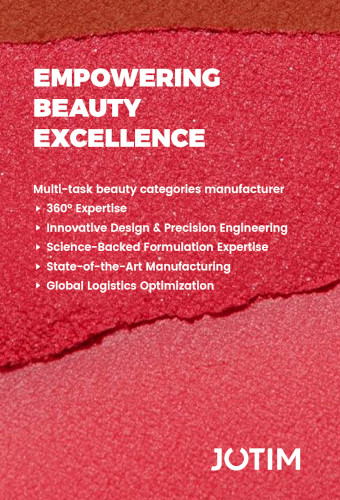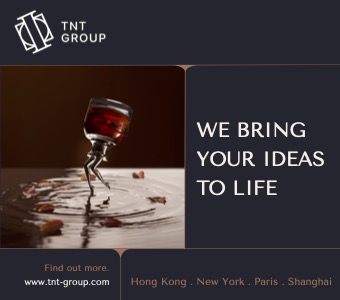The round table on cosmetic markets in Brazil, Asia and the United States, which took place on June 21 as part of the third edition of MakeUp in Paris somehow prefigured the forthcoming appointments of MakeUp in New York, on 12 and 13 September 2012, and of MakeUp in Sao Paulo on 10 and 11 April 2013.
For the organizers, it was not so much a matter of comparing a priori very different markets than to offer an overview of major trends at stake in these key areas.
Brazil: a market under construction

If Brazil is undoubtedly a country with a high growth potential for beauty manufacturers, "it is a market where many things can be undertaken" confirmed Helena Garcia de Gracia, Marketing Director of Eudora, a brand of the Boticário group.
Brazilian women have a culture of sensuality and a power of decision over their beauty. The penetration rate of make-up products is about 35% and their share of the beauty market in Brazil is about 12%, with a perfect balance between nail polishes, lipsticks and face makeup (25% each). But in 2012, make-up products are still mostly sold by home beauty advisers. "There are a lot of direct sales beauty consultants in Brazil, 2000 or 3000 women who sell make-up with only a basic training. This is the role of advertising and of social networks of doing the education work required to properly use the new products. There are in Brazil some beauty blogs which are very popular and where women describe their make-up experiences, the impact of the posts and comments is very strong," emphasised Helena Garcia de Gracia.
To be noted also, the importance of ethnic diversity. In Brazil, there are no fewer than one hundred different types of skin tones while Caucasians-type carnations only represent 49% of the population: a specificity that brands must consider in their communication.
USA: innovation as DNA
Unlike Brazil, the U.S. is a mature market, but it continues to grow steadily. "It is the first luxury and beauty market in the world, growth in 2010-2011 was of 9% in the premium make-up market and of 8% in the make-up mass market. [1] After years of crisis, this is a rebirth," explained Leila Rochet-Podvin, founder and director of the Cosmetics Inspiration & Creation Agency. According to Jamie Matusow from the American magazine, Beauty Packaging Magazine, "purchases of beauty products are a small luxury that U.S. women treat themselves with, while sales of electronic products and solar panels have collapsed."

A cornerstone of the market, is the culture of innovation, particularly in marketing. Many new products appear in the U.S. before spreading to the rest of the world. It is from this country that originated the vogue for make-up artists, mineral make-up as a specific category, or Doctor’s brands.
According to Rochet-Podvin, the growing diversity of the U.S. population is one of the major trends to consider: "in 2050, those who are currently known as ’minorities’ will represent the majority of the U.S. population." Which is reflected in particular by an evolution of the beauty ideal. Other trends identified by Leila Rochet-Podvin: the eulogy of femininity with an explosion of colours, urban cosmetics and entertainment, which results in products suited to contemporary lifestyles, ethics and sustainable development, up values, and finally the emergence of the healthy look that puts health and longevity at the heart of concerns.
Make-up is an important part of American culture, with 49% of women considering that it can help improves self confidence (IPSOS WLT 2011).
In Asia, the Japanese influence
The Asian market is still marked by the two heavyweights, China and Japan. For Caroline Moulin, President of NaO Design Trends: "What is happening in China is what happened eight years ago in Japan, sales of cosmetics are completely going through the roof. Brands in China are the same than those found in Japan. But there are differences in tastes depending of regions and colours may differ, especially between Beijing and Shanghai." But the Chinese market still has its make-up culture to build and, again in this case, beauty blogs play an important role. In China, the look is very important, a pale look that women are seeking to broaden, thanks to tips found on the social media authorized by the government.
In Japan, the market is very different since it’s already very mature and bearing the brunt of the aftermath of the Fukushima disaster. "But the market continues to innovate, especially in terms of packaging with very ingenious innovations in packaging and refilling systems," observed Moulin. "Furthermore, electro-beauty is very present in outlets." Japan’s culture of the flawless skin is very strong, the success of BB creams and the need for a radiant complexion exemplify this.
The offer of subcontractors
Given these characteristics and the development potential offered by these markets, participants to the roundtable emphasized on the growing role of subcontractors, who, in the wake of brands, are also extending their global presence. Moreover, an increasing number of companies choose to focus on marketing and to rely on full service for the development of their products. "Subcontracting is a professional service and with high value added, it is a fast way of bringing innovation to markets. In the U.S., more than 50% of beauty product’s come from subcontracting," confirmed Musa Pharand-Dias VP Marketing of the American firm Oxygen Developmentwho experienced a very strong growth in 2011.
For his part, Thomas Weckerle, CEO of the German company Weckerle, guarantees the ability of his company to ensure in the whole world the same level of quality: "Each market can benefit from the latest technologies and we can produce with the same tools in a global way." Good news for markets like Brazil, where access to the latest innovations is more difficult and where the help of full service companies is therefore most welcome. "Our customers are willing to pay the necessary price for a product with high added value, we make sure to take into account local needs, human diversity to offer innovative make-up products," underlined Weckerle.
Finally, the main common point which was highlighted between these three regions is the importance of social media and their increasing role in consumerism.





































